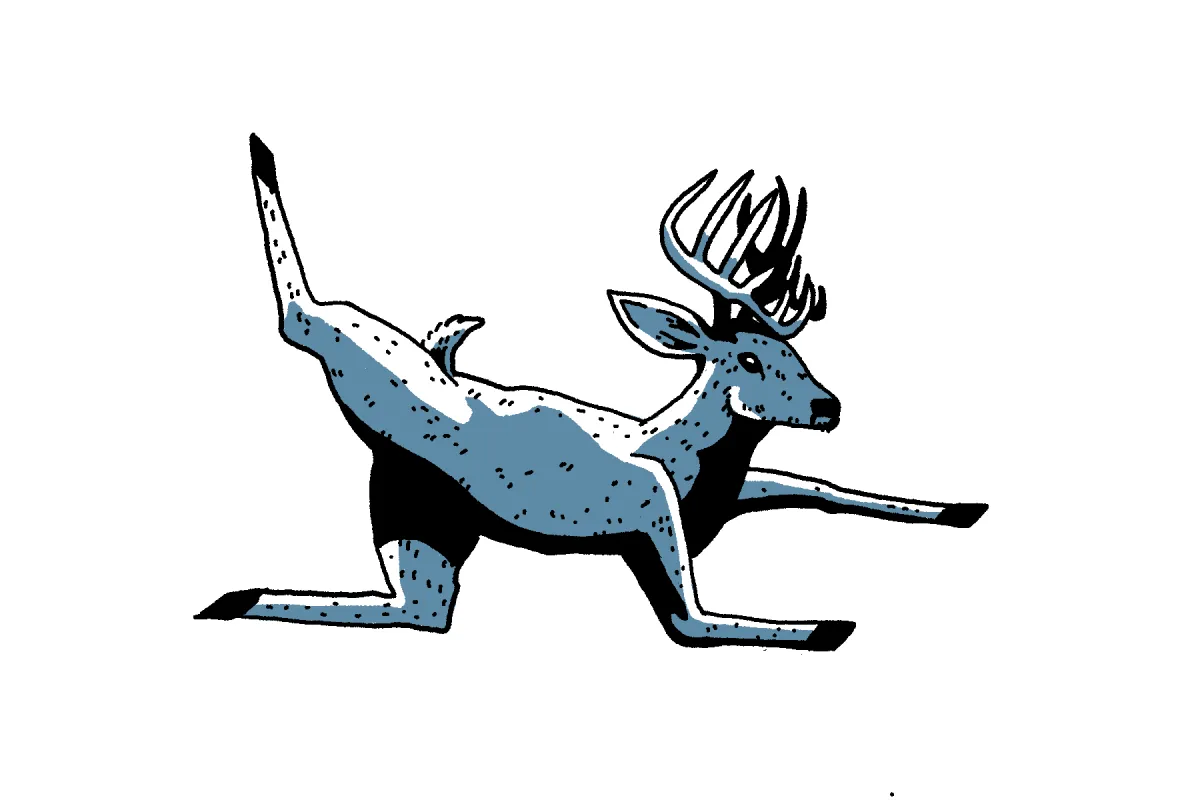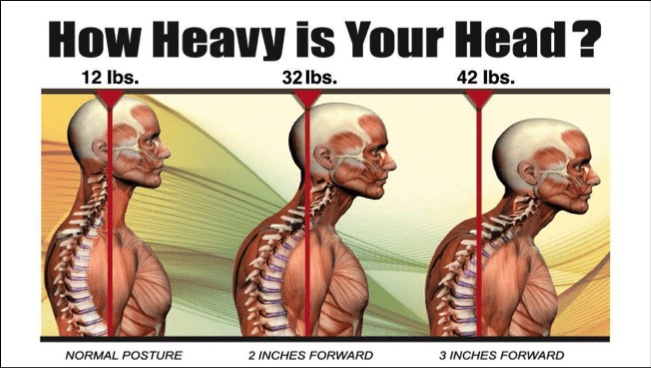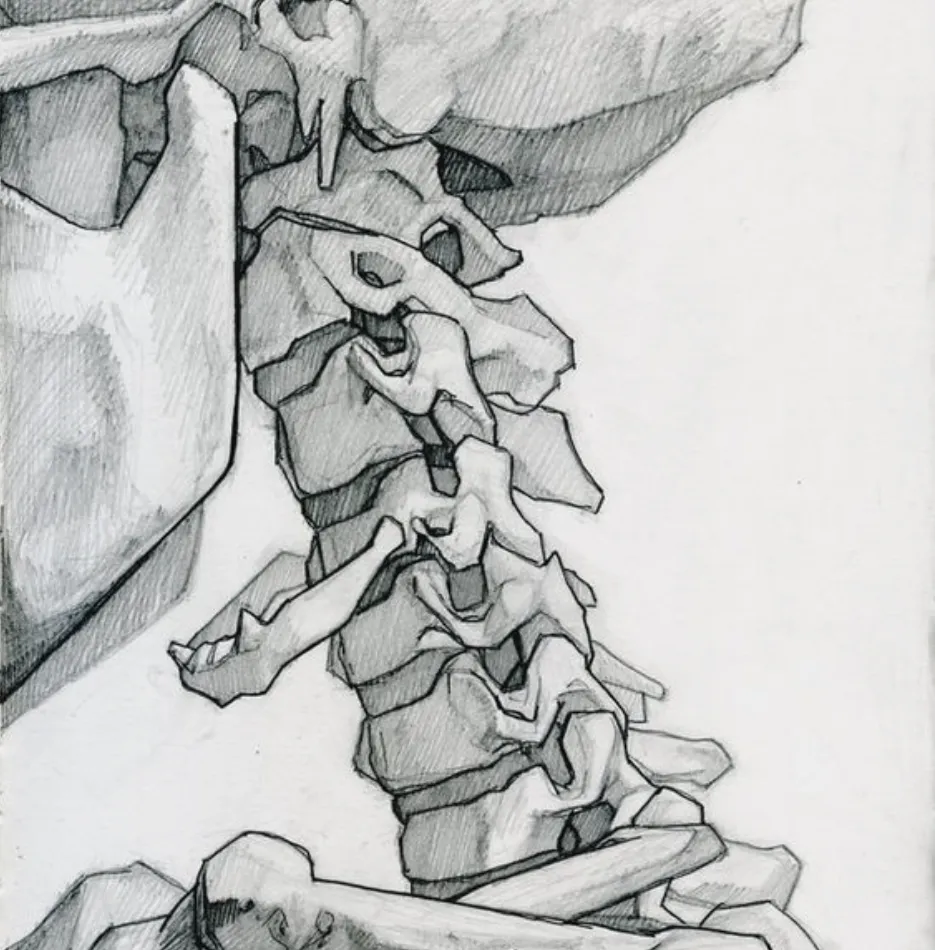The Latest

Sometimes, It Is All In Your Head
“For every inch of Forward Head Posture, it can increase the weight of the head on the spine by an additional 10 lbs.”
- Kapandj. Physiology of the Joints, Vol. 3
On average, the human head is about 10 lbs, about the weight of a bowling ball.
That’s no sweat for the musculoskeletal system when doing dynamic movement where all of our muscles are working in tandem.
Looking down and with eyes fixated on a screen? It’s suddenly a herculean task for our postural muscles, making the shoulders and neck tighten up.
This might lead you to think that your shoulders are the source of the problem. That might be a part of what's causing the discomfort. Without addressing the positioning of the head, “fixing” the shoulders is unlikely to bring you the relief you need from the effects of a forward head posture or “tech neck”.
What is forward head posture?
When your attention is pulled toward a screen, the head tends to move forward as well, leaving the lower half of the body still back in the chair. The weight of the head pulls the postural muscles to their end range and must work much harder to keep your head from completely falling forward.
For every inch forward your head goes, the heavier it becomes relative to the rest of your body.

For a sustainable solution for shoulder tension that stems from screen time, the head needs to move back towards a more balanced position over the shoulders.
Reducing usage of our devices and taking breaks to look into the distance can offer some relief, but what if reducing screen time for work is not an option? Becoming aware of posture and taking time to do postural exercises can help bring some relief to the neck and shoulders.
While seated, try this exercise to bring awareness to your own skull and ease in the shoulders:
Take a deep breath in and out. Test your range of motion by turning your head left and right, looking in the direction that your head is turning.
With your mouth closed bring the tip of your tongue to the roof of your mouth and find the soft palette towards your throat. This is where the center of your head is.
Bring the soft palette of your mouth back in space over the center of your chest and over the center of your hips.
Relax your tongue and take another deep breath in and out. Experience what you feel in this new position. Test your range of motion again turning your head left and right.
[insert reel}
Aligning the head can help improve posture and reduce muscle tightness associated with forward head posture.
Another great strategy to counter long hours at the computer can be Pilates, since nearly every exercise focuses on posture. Pilates mat is a great way to loosen the shoulders and strengthen intrinsic muscles of the spine as well as the core.
.
ZE MOVES
Feel | First | Movement
1:1 VIRTUAL BREATHWORK SESSON
10X 1:1 VIRTUAL MOVEMENT SESSIONS WITH ONE OF OUR FOUNDERS
BONUS! UNLIMITED ACCESS TO OUR ON-DEMOND MEMBERSHIP PORTAL
.
ZE MOVES
Feel | First | Movement
1:1 VIRTUAL PRE/POST NATAL MOVEMENT SESSION
1:1 VIRTUAL BREATHWORK SESSION - 45 minutes
© Pilatesforthepeople.CO | ALL RIGHTS RESERVED | TERMS & CONDITIONS | DISCLAiMER | Privacy | intellectual property notice


